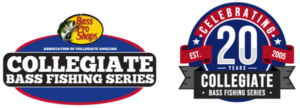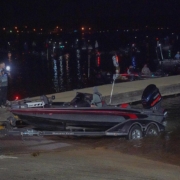Quick Tips for Launching and Trailering Like a Pro at the Boat Ramp
Originally published on T-H Marine Website: https://thmarinesupplies.com/blogs/t-h-marine-blog-fishing-boating-industry-news/quick-tips-for-launching-and-trailering-at-the-boat-ramp
We’re not afraid to go right out and say it for this post: unfortunate incidents, accidents, ignorance, lack of consideration, and frustration at the boat ramp threaten the fun of boating. But sometimes new boaters just don’t know and other times it’s boaters of varying experience levels who could benefit from reiteration of how to share the boat ramp. Even for us seasoned boaters, it doesn’t hurt to do a little review of best practices and ways we can do our part to help others, too.
As John Crews lays it out in the video and article below, there are several important tips we can follow for a smooth launch process, for setting a good example, and for sharing knowledge with new boaters. It’s a must watch, must read, and must-share so we can all have more fun this season.
Tips for Launching Your Boat
When you follow the advice below, slipping into the water at the boat ramp goes much smoother and it’s easier to get past any anxiety that comes with the process. Here’s how you can get there in 4 easy steps.
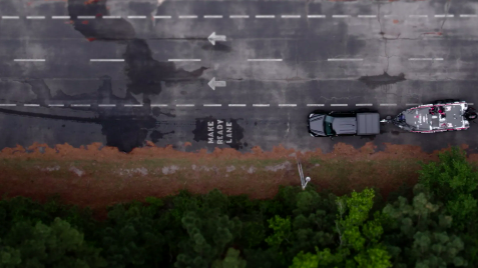
- Get Out of the Way When You Prep for Launch
Before you get right in front of the boat ramp and start backing up, get everything ready somewhere off to the side. This allows you the time to go through your launch checklist and gives others the space to launch their boat. Not only is this the right thing to do, but it can also help you prevent some common oversights that can harm you and your boat.
For many boats, this prep means:
- Removing Covers on Your Boat and Electronics
- Putting Plugs In
- Removing Motor Stiks, Transom Brackets, Steer Stops, and Tie-Downs
- Readying Fenders and Dock Ropes
- Connecting a Z-Launch cord
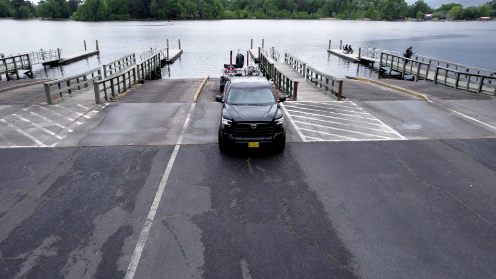
- Pull All the Way Forward for a Straight Shot
With your boat and gear ready to go, pull your vehicle all the way forward in front of the ramp lane so you only have to back up straight down the ramp and make minor adjustments to get it right where you need it.
Usually this means just driving backward nice and slow while turning your steering wheel a little left or a little right while checking the side mirrors and / or backup camera. This slow and steady technique will also prevent the unnecessary wear and tear on your tires that comes from turning a steering wheel too much when the vehicle isn’t moving.
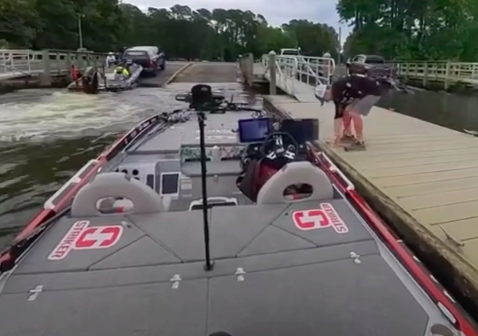
- Use the Right Lights During Low Vis Hours
While backing up in low light conditions, put your parking lights on instead of your headlights. Not only will this help your eyes as they try to distinguish between darker areas around you and the illumination of your trailer lights, it will also do the same for anyone else prepping their boat ahead of you, especially if you have those blindingly bright white headlights.
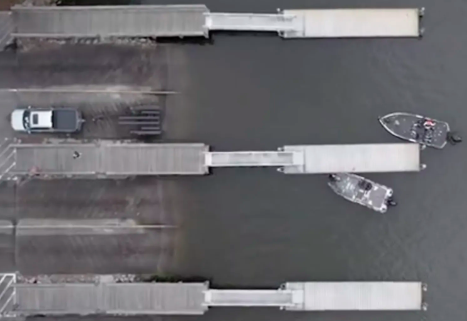
- Promptly Park Your Boat Out of the Way
Once you get your boat trailer in far enough and you put the vehicle in park, go ahead and move your boat around and out of the way. Depending on your boat and the boat ramp itself, this could mean tying up on the opposite side of the dock, pulling your boat into position and putting your shallow water anchors down, or beaching it nearby (just make sure you have a KeelShield if you like to beach it).
Then you can quickly and carefully pull your vehicle and trailer up into a designated parking spot where it’s out of the way. With that, you can grab the rest of your gear, lock up, and get boating!
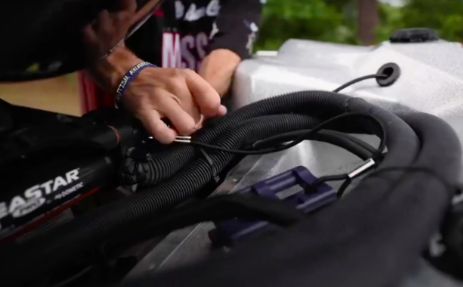
Tips for Pulling Your Boat Out
With a line of people pulling their boats out just like you, along with any incoming boats looking to launch, this can get tricky, but these 3 easy steps can reduce confusion and potential problems.
- Make Your Approach Based on the Number of Ramps
Before approaching the ramp, base your next steps on the design of the boat ramp and the other boaters around you. Some boat ramps have several lanes and docks available, so the process is similar to pulling up to the pump at a gas station. You can usually make quick work of finding an open one, pulling up to it, tying up, getting to your vehicle and trailer, and getting your boat pulled out.
However, other ramps will just have one lane with a queue of people waiting. That’s when communication and patience are key.
- Talk to the Boaters Around You
If the ramps are all busy or there’s only one lane, pull up so you’re in line for the ramp and start some friendly communication. This usually goes a long way to getting you on the same page with anyone else using the ramp. Then, as you get to be next in line, tie up in that lane or at the end of the dock so you can get your vehicle and trailer in place using the same process of pulling all the way forward for a straight shot back.
If you find yourself waiting a bit while next in line, consider kindly offering to help the person ahead of you whenever it makes sense. Chances are that they’d like to get out quickly and easily, too.
- Pull Up and Out of the Way as Soon as it’s Safe
Once you load your boat onto the trailer, with your winch strap hooked onto the bow eye and the winch gear locked, promptly pull up and out of the way. This may be in a parking spot up ahead or up far enough and off to the side so you’re clear of anyone else who needs to use the ramp.
Then you can safely and courteously do things like:
- Remove Plugs and Drain Your Boat
- Stow Fishing Gear, Fenders, Ropes, and Other Boating Gear in Gatches or in Your Vehicle
- Wash Your Boat Down
- Secure Your Boat with Motor Stiks, Transom Brackets, Steer Stops, and Tie-Downs
- Cover Your Electronics and Boat (if needed)
